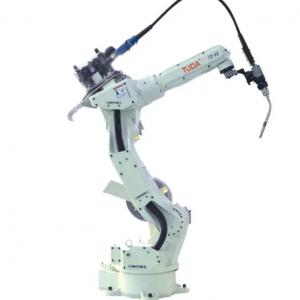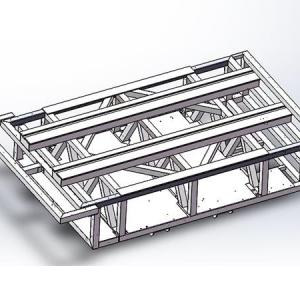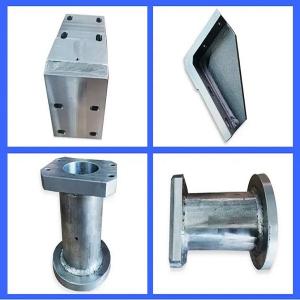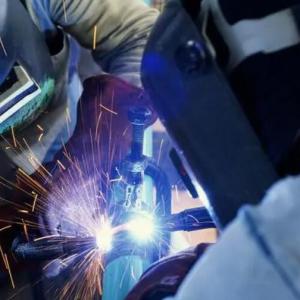Why we choose Laser Welding methods-China Welding
Why we choose Laser Welding methods? What is the advantages of Laser Welding?
Compared with other welding technologies, the main advantages of laser welding are:
1. Fast speed, large depth and small deformation.
2. It can be welded at room temperature or under special conditions, and the welding equipment is simple. For example, when a laser passes through an electromagnetic field, the beam will not be deflected; the laser can be welded in vacuum, air, and a certain gas environment, and can be welded through glass or materials that are transparent to the beam.
3. It can weld refractory materials such as titanium, quartz, etc., and can weld different materials with good effect.
4. After the laser is focused, the power density is high. When welding high-power devices, the aspect ratio can reach 5:1, and the maximum can reach 10:1.
5. Micro welding can be carried out. After the laser beam is focused, a small spot can be obtained, and it can be accurately positioned, which can be applied to the group welding of micro and small workpieces in mass automatic production. (minimum spot can reach 0.1mm)
6. It can weld hard-to-reach parts, and implement non-contact long-distance welding, which has great flexibility. Especially in recent years, optical fiber transmission technology has been adopted in YAG laser processing technology, and the popularization of fiber continuous laser has made laser welding technology more widely promoted and applied, which is more convenient for automation integration.
7. The laser beam is easy to realize the beam splitting according to time and space, and can carry out multi-beam simultaneous processing and multi-station processing, which provides conditions for more precise welding.
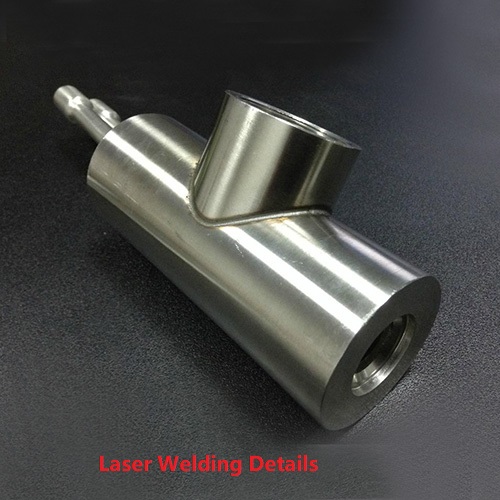
However, laser welding also has certain limitations:
1. The welding parts are required to be assembled with high precision, and the position of the beam on the workpiece cannot be significantly shifted. This is because the spot size is small after the laser is focused, and the welding seam is narrow, which is filled with metal materials. If the workpiece assembly accuracy or beam positioning accuracy does not meet the requirements, it is easy to cause welding defects.
2. The cost of lasers and related systems is high, and the one-time investment is large.
Laser welding heat conduction
Laser welding is to irradiate a high-intensity laser beam to the metal surface, and through the interaction between the laser and the metal, the metal is melted to form a weld. Metal melting is only one of the physical phenomena during the interaction of the laser with the metal. Sometimes light energy is not mainly converted into metal melting, but manifested in other forms, such as vaporization, plasma formation, etc. However, to achieve good fusion welding, metal melting must be the dominant form of energy conversion. To this end, it is necessary to understand the various physical phenomena generated in the interaction between laser and metal and the relationship between these physical phenomena and laser parameters, so that most of the laser energy can be converted into metal melting energy by controlling the laser parameters, so as to achieve the welding efficiency. Purpose.
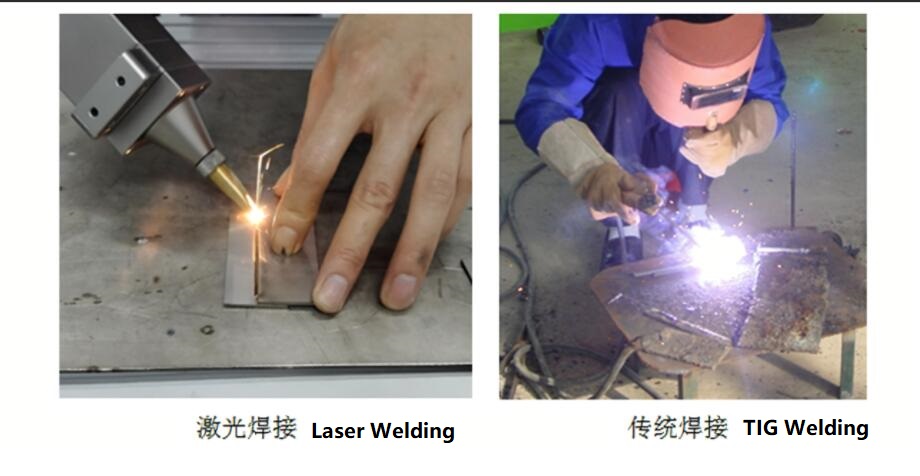
1. Power density
Power density is one of the most critical parameters in laser processing. With higher power densities, the surface layer can be heated to the boiling point in the microsecond time range, resulting in a large amount of vaporization. Therefore, high power density is beneficial for material removal processes such as punching, cutting, and engraving. For lower power density, it takes several milliseconds for the surface temperature to reach the boiling point. Before the surface vaporizes, the bottom layer reaches the melting point, which is easy to form a good fusion weld. Therefore, in conduction laser welding, the power density is in the range of 104~106W/cm2.
2. Laser pulse waveform
Laser pulse shape is an important issue in laser welding, especially for thin sheet welding. When the high-intensity laser beam hits the surface of the material, 60~98% of the laser energy will be reflected and lost on the metal surface, and the reflectivity varies with the surface temperature. During the action of a laser pulse, the reflectivity of metals varies greatly.
3. Laser pulse width
Pulse width is one of the important parameters of pulse laser welding. It is not only an important parameter different from material removal and material melting, but also a key parameter that determines the cost and volume of processing equipment.
4. Influence of defocus amount on welding quality
Laser welding usually requires a certain amount of fuss, because the power density in the center of the spot at the laser focus is too high, and it is easy to evaporate into a hole. The power density distribution is relatively uniform across the planes away from the laser focus.
There are two defocusing methods: positive defocusing and negative defocusing. The focal plane above the workpiece is positive defocus, otherwise it is negative defocus. According to the geometrical optics theory, when the defocus is positive, the power density on the corresponding plane is approximately the same, but the shape of the molten pool obtained is actually different. When the defocus is negative, a larger penetration depth can be obtained, which is related to the formation process of the molten pool. Experiments show that when the laser is heated for 50~200us, the material begins to melt, forming a liquid phase metal and vaporizing, forming a market-pressure steam, which is ejected at a very high speed, emitting a dazzling white light. At the same time, the high concentration of vapor moves the liquid metal to the edge of the molten pool, forming a depression in the center of the molten pool. When the defocus is negative, the internal power density of the material is higher than that of the surface, and it is easy to form stronger melting and vaporization, so that the light energy can be transmitted deeper into the material. Therefore, in practical applications, when the penetration depth is required to be large, negative defocusing is used; when welding thin materials, positive defocusing should be used.
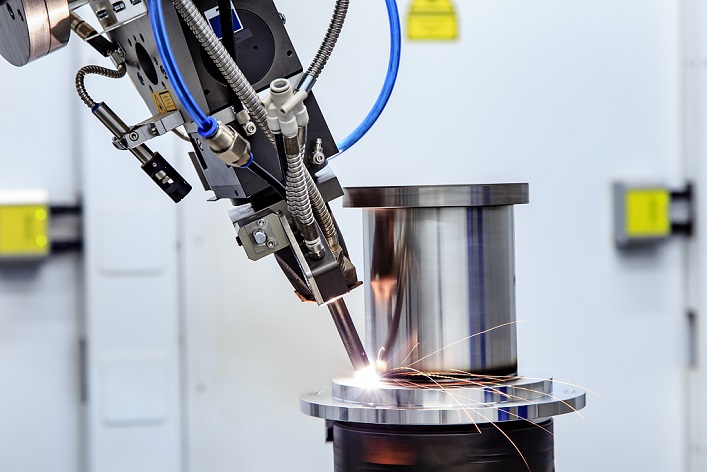
Laser welding process method
1. Welding between sheets. Including butt welding, end welding, center penetration fusion welding, center penetration fusion welding and other 4 process methods.
2. Welding of wire and wire. Including wire-to-wire butt welding, cross welding, parallel lap welding, T-welding and other 4 process methods.
3. Welding of wire and block components. The connection between the metal wire and the block element can be successfully realized by laser welding, and the size of the block element can be arbitrary. During welding, attention should be paid to the geometrical dimensions of the filamentary elements.
4. Welding of different metals. Welding different types of metals addresses weldability and weldability parameter ranges. Laser welding between different materials is only possible with certain material combinations.
laser brazing
Laser fusion welding is not suitable for the connection of some components, but laser welding can be used as a heat source to perform soft soldering and brazing, which also has the advantages of laser fusion welding. There are many ways to use soldering. Among them, laser soldering is mainly used for the welding of printed circuit boards, especially for the assembly technology of chip components. Compared with other methods, laser soldering has the following advantages:
1. Due to local heating, the components are not prone to thermal damage, and the heat affected zone is small, so soldering can be performed near the thermal components.
2. Using non-contact heating to melt the bandwidth without any auxiliary tools, it can be processed after the double-sided components are equipped on the double-sided printed circuit board.
3. Good stability in repeated operation. The flux has little pollution to welding tools, and the laser irradiation time and output power are easy to control, and the laser brazing yield is high.
4. The laser beam is easy to achieve light splitting, and it can be divided in time and space by optical elements such as half mirrors, mirrors, prisms, scanning mirrors, etc., which can realize multi-point simultaneous symmetrical welding.
5. Laser brazing mostly uses a laser with a wavelength of 1.06um as a heat source, which can be transmitted by optical fiber, so it can be processed in parts that are not easy to be welded by conventional methods, with good flexibility.
6. Good focus, easy to realize the automation of multi-station device.
Laser deep penetration welding
1. Metallurgical process and process theory
The metallurgical physical process of laser deep penetration welding is very similar to that of electron beam welding, that is, the energy conversion mechanism is completed through the "pinhole" structure. When illuminated by a beam of sufficiently high power density, the material evaporates to form small holes.
This small hole filled with steam is like a black body, which absorbs almost all the energy of the incident light, and the equilibrium temperature in the hole is about 25,000 degrees. Heat is transferred from the outer walls of the high-temperature cavity, melting the metal surrounding the cavity. The small hole is filled with high-temperature steam generated by the continuous evaporation of the wall material under the irradiation of the light beam. The four walls of the small hole surround the molten metal, and the liquid metal surrounds the solid material. The liquid flow outside the pore wall and the surface tension of the wall layer maintain a dynamic equilibrium with the steam pressure continuously generated in the pore cavity. The light beam continuously enters the small hole, and the material outside the small hole is continuously flowing. As the light beam moves, the small hole is always in a stable state of flow. That is, the hole and the molten metal surrounding the hole wall move forward with the advancing speed of the leading beam, and the molten metal fills the void left by the removal of the hole and condenses with it, and the weld is formed.
2. Influencing factors
Factors that affect laser deep penetration welding include: laser power, laser beam diameter, material absorption rate, welding speed, shielding gas, lens focal length, focus position, laser beam position, and laser power at the start and end points of the welding. , Gradual drop control.
3. Features and advantages of laser deep penetration welding
Features: (1) High aspect ratio. As the molten metal forms around the cylindrical high-temperature steam chamber and extends toward the workpiece, the weld becomes deep and narrow. (2) Minimum heat input. Because the source cavity temperature is very high, the melting process occurs very fast, the heat input to the workpiece is very low, and the thermal deformation and heat affected zone are small. (3) High density. Because the small holes filled with high temperature steam are conducive to the agitation of the welding pool and the escape of gas, resulting in the formation of non-porous penetration welding. The high cooling rate after welding is easy to make the weld microstructure. (4) Strengthen the weld. (5) Precise control. (6) Non-contact, atmospheric welding process.
Advantages: (1) Since the focused laser beam has a much higher power density than the conventional method, the welding speed is fast, the heat-affected zone and deformation are small, and it can also weld difficult-to-weld materials such as titanium and quartz. (2) Because the beam is easy to transmit and control, and there is no need to replace the torch and nozzle frequently, the auxiliary time of downtime is significantly reduced, so the load factor and production efficiency are high. (3) Due to the purification effect and high cooling rate, the weld is strong and the overall performance is high. (4) Due to the low balance heat input and high machining accuracy, the reprocessing cost can be reduced. In addition, the moving cost of laser welding is relatively low, which can reduce production costs. (5) It is easy to realize automation, and can effectively control the beam intensity and fine positioning.
4. Laser deep penetration welding equipment
Continuous wave CO2 lasers are usually used in laser deep penetration welding. Such lasers can maintain a sufficiently high output power, produce a "pinhole" effect, penetrate the entire workpiece section, and form a strong welded joint.
As far as the laser itself is concerned, it is just a device that produces a well-directed parallel beam that can act as a heat source. If it is directed and effectively processed and then shot at the workpiece, its input power has strong compatibility, making it better suited to automated processes.
In order to carry out welding effectively, the laser and other necessary optical, mechanical and control components together form a large welding system. The system includes lasers, beam delivery components, workpiece handling and movement devices, and controls. This system can be simply manual handling and fixing of workpieces by the operator, or can include automatic loading, unloading, fixing, welding, and inspection of workpieces. The overall requirement for the design and implementation of this system is to obtain satisfactory welding quality and high production efficiency.
Laser welding of steel materials
1. Laser welding of carbon steel and ordinary alloy steel
In general, the laser welding effect of carbon steel is good, and the welding quality depends on the impurity content. Like other welding processes, sulphur and phosphorus are sensitive factors for weld cracking.
In order to obtain satisfactory welding quality, preheating is required when the carbon content exceeds 0.25%. When welding steels with different carbon content to each other, the welding torch can be slightly biased to the side of the low carbon material to ensure the quality of the joint.
Low carbon boiling steel is not suitable for laser welding due to its high content of sulfur and phosphorus. Low carbon killed steel welds very well due to its low impurity content.
Both medium and high carbon steels and common alloy steels can be laser welded well, but require preheating and post-weld treatment to relieve stress and avoid crack formation.
2. Laser welding of stainless steel
In general, stainless steel laser welding is easier to obtain high-quality joints than conventional welding. Due to the small heat affected zone at high welding speeds, sensitization is not a significant issue. Compared with carbon steel, the low thermal conductivity of stainless steel makes it easier to obtain deep penetration and narrow welds.
3. Laser welding between different metals
The extremely high cooling rate and small heat-affected zone of laser welding create favorable conditions for the compatibility of materials with different structures after welding of many different metals. It has been proved that the following metals can be successfully laser deep penetration welding: stainless steel ~ low carbon steel, 416 stainless steel ~ 310 stainless steel, 347 stainless steel ~ HASTALLY nickel alloy, nickel electrode ~ cold forged steel, bimetals with different nickel content.

